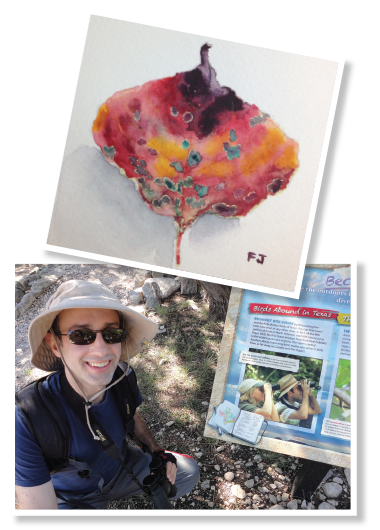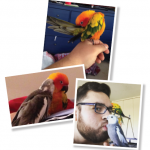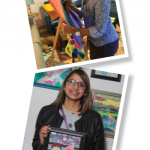Farokh Jamalyaria, MD, a rheumatologist in Houston, never set out to become a birder. He remembers his first foray into birding as being completely unintentional. At 8 years old, while living in Ruston, La., he showed his mother an image of an ivory-billed woodpecker—an extinct species last spotted in the 1940s about 100 miles from Ruston. Upon seeing the image, she was confident she’d seen one fly onto a dead tree near their home and felt it wasn’t the similar, smaller pileated woodpecker.
Farokh called the Cornell Lab of Ornithology to report the sighting and the gentleman who answered the phone patiently listened to his report, took down his name and address, and signed him up to receive the lab’s newsletter.
“My parents both inspired my love of the outdoors,” Dr. Jamalyaria says. “My mom converted the small backyard of my childhood home into a garden with numerous fruit, vegetable and herb species, which she still enthusiastically maintains, while my father encouraged me to try running.”
His love of the outside world, combined with his keen investigative skills, led him to renew his love for birding while in medical school at Baylor College of Medicine, Houston, and later in Southern California where he completed his internal medicine residency. Today, in his hometown of Houston, he and his fiancée, Christine Casas, MD, a local pediatrician, join friends for hikes, especially during the spring migration of neotropical birds from Central and South America.
In medical school, Dr. Jamalyaria learned the upper Texas coast is known for some of the best birding in the country. In spring, many birds migrate between their winter homes in Central and South America to the northern U.S. and Canada, passing through Houston in April and May.
“I’ve always been a runner and like to run through natural areas, which lends itself well to seeing different species of birds,” Dr. Jamalyaria says. “On weekends, I’ll go hiking or running, and while I don’t always go specifically to see birds, it’s a great side benefit of spending time in nature.”
Combining Activities

TOP: One of Dr. Jamalyaria’s watercolors.
BOTTOM: Dr. Jamalyaria on one of his birding trips in front of a sign in a Texas state park. The sign has a photograph of Dr. Jamalyaria on it taken by Texas Parks & Wildlife when he first started birding.
Photo by Christine Casas, MD
Dr. Jamalyaria says birding is a well-suited addition to outdoor physical workouts, such as running, cycling or hiking. He often wears a small pair of binoculars around his waist while running and although he used to take written notes on bird species he saw, he has found the eBird app offers a more thorough way to track his sightings.
“I’ve probably seen close to 800 different bird species since I first started birding,” he says. “I’ve also met many other birders, most of whom are very warm and engaging. Some are casual, others are serious list keepers and some take high-quality photos of the birds they encounter.”
In addition to birding in Texas and western North America, Dr. Jamalyaria has also explored the lowlands and highlands of Costa Rica, Andean cloud forests, the upper Amazon Basin, the Yucatan Peninsula, central Mexico, Fiji and New York City’s Central Park, which he calls “one of the best birding hotspots in North America.”
“[Although] you can certainly see different species of birds when you travel, one doesn’t need to take a trip to enjoy birding,” Dr. Jamalyaria says. “It’s an unusually accessible hobby that can be practiced anywhere on Earth, including in one’s own backyard.”
Over the years, Dr. Jamalyaria has taken his birding to the next level by learning the songs of many species. He often listens to Peterson Field Guides CDs on his drives to and from work.
“Since learning these songs, I’ve been able to identify hidden birds that would have puzzled me in the past,” he says. “Now that I’m familiar with aural birding, every time I hear an unfamiliar birdcall, it presents a potential puzzle to solve.”
Dr. Jamalyaria also sees similarities between birding and rheumatology.
“Once in a while, one encounters a bird that, because of unusual plumage or behavior, can’t be identified, at least initially,” he says. “The same holds true in rheumatology: Once in a long while, you’ll encounter a patient who can’t be given a precise diagnosis, at least initially. In birding and medicine, it’s important to know common species and diseases well, respectively, to be able to sniff out the rare ones.”


